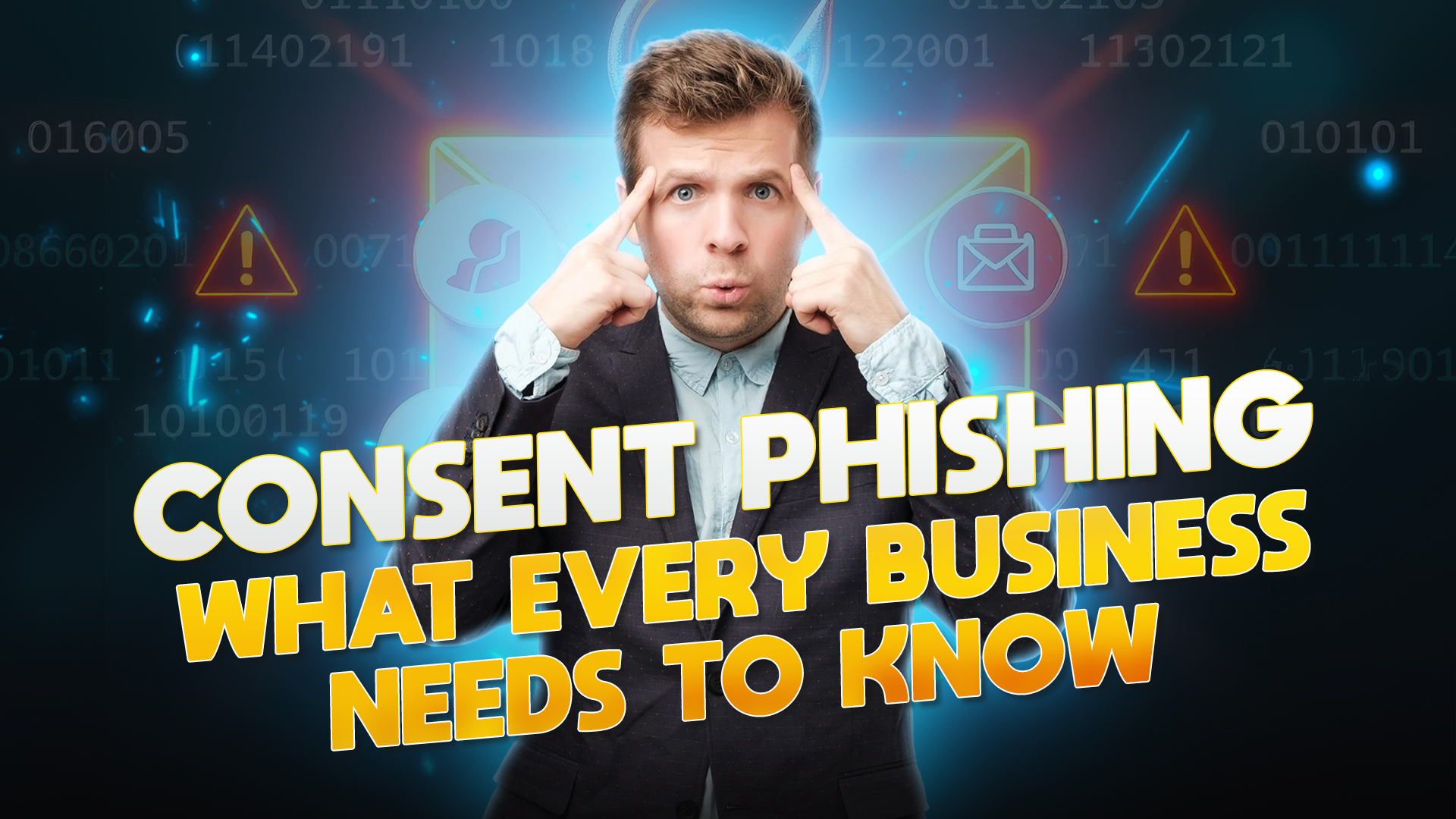QIT Solutions: Blog

Consent Phishing: What Every Business Needs to Know
As an MSP, we see cyber threats evolve faster than many businesses can adapt. One of the quieter but increasingly dangerous attack methods is Consent Phishing. Unlike traditional phishing emails that trick users into giving up passwords, consent phishing tricks users into authorizing malicious apps that gain direct access to business data through legitimate Microsoft 365 or Google APIs. Because no password is stolen and no malware is installed, these attacks are harder to detect—and often bypass standard security tools.
In this article, we will break down what consent phishing is, why it is such a high-risk issue for businesses, and the practical steps your organization can take to protect itself.
What is Consent Phishing?
Consent phishing attacks exploit OAuth 2.0, the standard protocol that lets apps request permission to access data without asking for a password. Users are trained to trust prompts like:
“App XYZ is requesting permission to read your mail and access your contacts. Do you accept?”
Attackers register malicious apps that look legitimate, then trick employees into granting permissions. Once approved, the malicious app can read emails, forward messages, or access files in OneDrive and SharePoint—all without needing the user’s credentials.
Unlike account takeover via stolen passwords, consent phishing is essentially a “back door with a key you gave away.” Revoking that access requires admin intervention, not just a password reset.
Why Consent Phishing is So Dangerous
- Bypasses MFA
Multi-factor authentication protects against stolen passwords, but consent phishing doesn’t rely on credentials. If a user clicks “accept,” the attacker gets access through a trusted channel. - Looks Legitimate
The prompts come from Microsoft or Google’s real identity systems. Users are conditioned to click “allow” to get work done, making this a highly effective social engineering tactic. - Persistent Access
Permissions last until revoked by an administrator. Even if the user changes their password, the malicious app keeps access. - Difficult to Detect
No malware is installed and logins come from legitimate apps. Unless your MSP or IT team monitors OAuth apps, the breach may go unnoticed.
Real-World Scenarios
- Business Email Compromise (BEC): Attackers use access to email to monitor conversations and send fraudulent invoices at the right moment.
- Data Exfiltration: Sensitive files from SharePoint or OneDrive are silently synced out to attacker systems.
- Lateral Movement: Attackers use app permissions to spread across groups and shared drives, escalating exposure.
In each case, traditional defenses like endpoint antivirus or spam filtering offer little protection.
What Options Do Businesses Have?
1. Control App Consent Policies
Microsoft 365 and Google Workspace both allow admins to restrict which apps users can consent to. MSPs typically recommend:
- Blocking user consent by default.
- Allowing only admin-approved apps.
- Reviewing existing granted apps and revoking suspicious ones.
2. Monitor OAuth Apps Regularly
Part of our MSP role is to audit tenant environments. We identify and remove risky or unknown apps that already have access. This should be part of quarterly security reviews.
3. User Awareness Training
Consent phishing is primarily social engineering. Employees need to recognize that not all “Accept” prompts are safe. Training should focus on:
- Stopping and verifying before granting permissions.
- Reporting suspicious requests to IT.
- Understanding that MFA does not stop this type of attack.
4. Integrate SIEM and Alerting
With the right security stack, consent grants can trigger alerts. Microsoft Defender for Cloud Apps and third-party SIEM tools can watch for new OAuth app authorizations, giving IT early warning.
5. Incident Response Playbook
When an attack is detected:
- Revoke app permissions immediately through the admin console.
- Review audit logs for data accessed.
- Notify users and reset any impacted workflows.
- Strengthen app consent policies to prevent recurrence.
Balancing Productivity and Security
One of the challenges for businesses is that OAuth is essential. Teams rely on apps like Slack, DocuSign, or Salesforce integrations. Blocking everything can hinder productivity. The MSP’s role is to:
- Build an approval workflow for new apps.
- Maintain a catalog of trusted apps that employees can safely use.
- Educate teams on how to request app approvals quickly so that business is not slowed down.
This balance ensures security without strangling innovation.
The Cost of Ignoring Consent Phishing
Organizations that ignore consent phishing face both direct and indirect costs:
- Breach Costs: Data loss, regulatory fines, and reputational damage.
- Operational Disruption: Compromised accounts can lead to downtime and employee frustration.
- Insurance Impact: Cyber insurers are increasingly requiring strong identity and app governance policies. Unsupported or weak controls can raise premiums or lead to denied claims.
For small and mid-sized businesses, even one incident can be financially devastating.
How MSPs Can Help
From the MSP perspective, consent phishing requires a layered approach:
- Technical Controls: Enforcing consent policies, SIEM monitoring, endpoint detection.
- Governance: Regular reviews of app permissions, vendor risk management, compliance alignment.
- End-User Empowerment: Training and communication that make employees partners in defense.
We view consent phishing not as a one-time project but as part of ongoing security hygiene—just like patch management or backup verification.
Final Thoughts
Consent phishing is subtle, effective, and growing. Attackers no longer need to steal your password if they can trick you into handing them a golden key. For businesses, the message is clear: review your app consent policies, implement monitoring, train your users, and partner with your MSP to stay ahead of this evolving threat.
This is not a problem to solve once—it is a continuous part of your security posture. The organizations that act now will be safer, more compliant, and better prepared for the next wave of phishing tactics.





